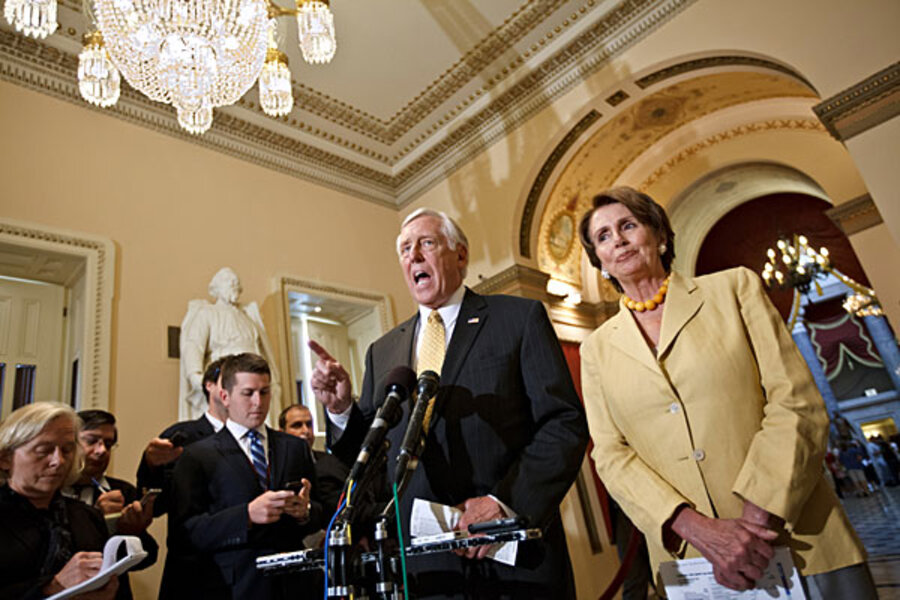CBO report: US could be the next Greece – in 2037
Loading...
| Washington
For all of the hemming and hawing about spending cuts in Washington, the Congressional Budget Office's latest long-term budget forecast reflects two painful facts for Washington: How large the nation's problems remain, and how the GOP's 2010 surge into Washington has had only a limited impact in changing America's fiscal trajectory.
The annual report, released on Tuesday by Capitol Hill's nonpartisan budget umpires, argues that if Congress's current policies continue – meaning that the Bush tax cuts are renewed at year's end and Medicare providers don't face drastic reductions in payments, among other issues – federal debt held by the public will reach 93 percent of gross-domestic product (GDP) by the year 2022. That's down about seven percentage points from CBO's 2011 forecast, which saw the nation's debt as a share of GDP rising to 100 percent by 2021.
That's thanks in large part to the Budget Control Act of last summer – also known as the debt-ceiling deal – where Congress achieved more than $2 trillion in savings over the next decade through a combination of spending cuts and discretionary spending caps.
In 2010, however, the CBO foresaw debt at 109 percent of GDP by 2025 – a number that would match America's post-World War II high for debt as a share of GDP. This year, the CBO sees the nation breaching that historical ceiling only a single year later under current policy.
The tea-party backed conservatives who helped Republicans retake the House have had only 18 months as part of the majority in one half of Congress. But election-year promises to cut federal spending back to 2008 levels, for example, have not come to pass.
It's important to acknowledge what the CBO means by "current policy," which is different from current law. Under current law, a bevy of tax cuts and spending decreases will crash onto the economy in 2013. That would improve the debt picture, but a separate CBO analysis found that that allowing all of current law to come into effect would likely put the economy back into a recession.
"Current policy" assumes that Congress will find a way to avoid that fate and continue on a path similar to the one in effect now. Looking current policy reinforces the massive fiscal challenges confronting the US. Simply put, following current policy puts the nation into dire financial straits faster. Under current policy, debt spirals to nearly 200 percent GDP by 2037. Beleaguered Greece, by comparison, had debts of 165 percent of the nation's GDP in 2011.
And that's not the worst case: under the CBO's most pessimistic economic assumptions, America's debt hits 2.5 times GDP in 2035, creating an economic scenario so dire that the CBO's forecasting model breaks down.
It's not something Congress hasn't heard.
"This should serve as another wakeup call for us that the failure to adopt, pursue, agree upon a big, bold balanced plan, means the prospects for our economy are not what they need to be for us, our children and our grandchildren," said House minority whip Steny Hoyer (D) of Maryland in a talk with reporters Tuesday.
But what will they do about it? Little to nothing, all sides say, until after November's elections.







